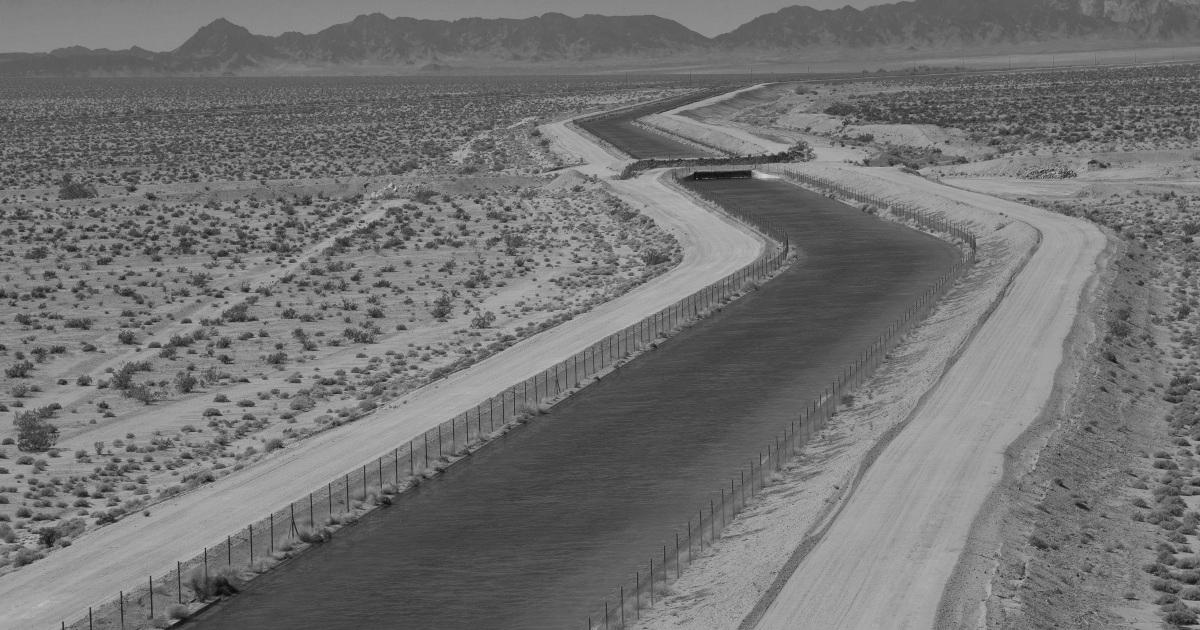California declares unprecedented water restrictions amid drought | Water Information
Warning: Undefined variable $post_id in /home/webpages/lima-city/booktips/wordpress_de-2022-03-17-33f52d/wp-content/themes/fast-press/single.php on line 26

2022-05-06 18:08:17
#California #declares #unprecedented #water #restrictions #drought #Water #Information
Los Angeles, California – Amid a once-in-a-millennium prolonged drought fuelled by the local weather disaster, one of the largest water distribution agencies in america is warning six million California residents to cut again their water usage this summer time, or threat dire shortages.
The dimensions of the restrictions is unprecedented in the historical past of the Metropolitan Water District of Southern California, which serves 20 million individuals and has been in operation for nearly a century.
Adel Hagekhalil, the district’s general supervisor, has asked residents to limit outdoor watering to in the future a week so there can be sufficient water for ingesting, cooking and flushing bogs months from now.
“This is real; that is serious and unprecedented,” Hagekhalil informed Al Jazeera. “We need to do it, in any other case we don’t have enough water for indoor use, which is the basic well being and security stuff we need each day.”
The district has imposed restrictions earlier than, but not to this extent, he mentioned. “This is the first time we’ve said, we don’t have enough water [from the Sierra Nevadas in northern California] to last us for the rest of the 12 months, until we minimize our usage by 35 %.”
Water pipes in Santa Clarita, California, are part of the state’s water mission – allocations have been minimize sharply amid the drought [File: Aude Guerrucci/Reuters]Depleted reservoirsMany of the water that southern California residents enjoy begins as snow in the Sierra Nevadas and the Rocky Mountains. The snowmelt runs downstream into rivers, the place it's diverted through reservoirs, dams, aqueducts and pipes.
For a lot of the final century, the system labored; however over the past twenty years, the climate crisis has contributed to prolonged drought in the west – a “megadrought” of a scale not seen in 1,200 years. The situations imply less snowfall, earlier snowmelt, and water shortages in the summertime.
California has monumental reservoirs, which Hagekhalil likens to a savings account. But at the moment, it is drawing greater than ever from these savings.
“We've two methods – one in the California Sierras and one in the Rockies – and we’ve by no means had both programs drained,” Hagekhalil said. “That is the primary time ever.”
John Abatzoglou, an associate professor who studies climate at the University of California Merced, told Al Jazeera that more than 90 p.c of the western US is currently in some type of drought. The past 22 years were the driest in additional than a millennium within the southwest.
“After some of these current years of drought, a part of me is like, it could actually’t get any worse – however right here we're,” Abatzoglou mentioned.
The snowpack in the Sierra Nevadas is now 32 % of its typical quantity this time of yr, he mentioned, describing the warming climate as a long-term tax on the west’s water price range. A hotter, thirstier ambiance is lowering the quantity of moisture that flows downstream.
The dry situations are also creating a longer wildfire season, because the snowpack moisture retains vegetation moist enough to withstand carrying hearth. When the snowpack is low and melting earlier in the 12 months, vegetation dries out sooner, allowing flames to comb by means of the forests, Abatzoglou stated.
An aerial drone view showing low water near the Enterprise Bridge at Lake Oroville in Butte County, California where water ranges are lower than half of its normal storage capacity [Kelly M Grow/California Department of Water Resources]‘Significant imbalance’With much less water out there from the northern California snowpack, Hagekhalil said the district is relying more on the Colorado River. “We’re fortunate that in the Colorado River, we've got in-built storage over time,” he mentioned. “That storage is saving the day for us right now.”
But Anne Castle, a senior fellow at the College of Colorado’s Getches-Wilkinson Centre, stated the river that provides water to communities across the west is experiencing another “extremely dry” year. The river, which flows southwest from Colorado to the northwestern tip of Mexico, is fed by the snowpack in the Rocky Mountains and the Wasatch Range.
Two of the most important reservoirs in the US are at critically low levels: Lake Mead is a few third full, whereas Lake Powell is a quarter full – its lowest stage since it was first crammed within the Nineteen Sixties. Lake Powell is so parched that authorities businesses worry its hydropower generators could become damaged, and are mobilising to divert water into the reservoir.
Over the previous 22 years, the Colorado River system has seen a “important imbalance” between provide and demand, Fortress told Al Jazeera. “Local weather change has diminished the flows within the system generally, and our demand for water tremendously exceeds the dependable supply,” she said. “So we’ve got this math downside, and the only manner it may be solved is that everyone has to use less. However allocating the burden of those reductions is a very difficult problem.”
Within the quick time period, Hagekhalil mentioned, California is working with Nevada and Arizona to invest in conserving water and lowering consumption – however in the long run, he needs to transition southern California away from its reliance on imported water and as a substitute create an area provide. This is able to involve capturing rain, purifying wastewater and polluted groundwater, and recycling every drop.
What worries him most about the way forward for water in California, nonetheless, is that folks have brief memory spans: “We’ll get heavy rain or a heavy snowpack, and folks will overlook that we have been on this scenario … I will not let individuals forget that we’re so depending on the snowpack, and we will’t let sooner or later or one year of rain and snow take the energy from our building the resilience for the longer term.”
Quelle: www.aljazeera.com